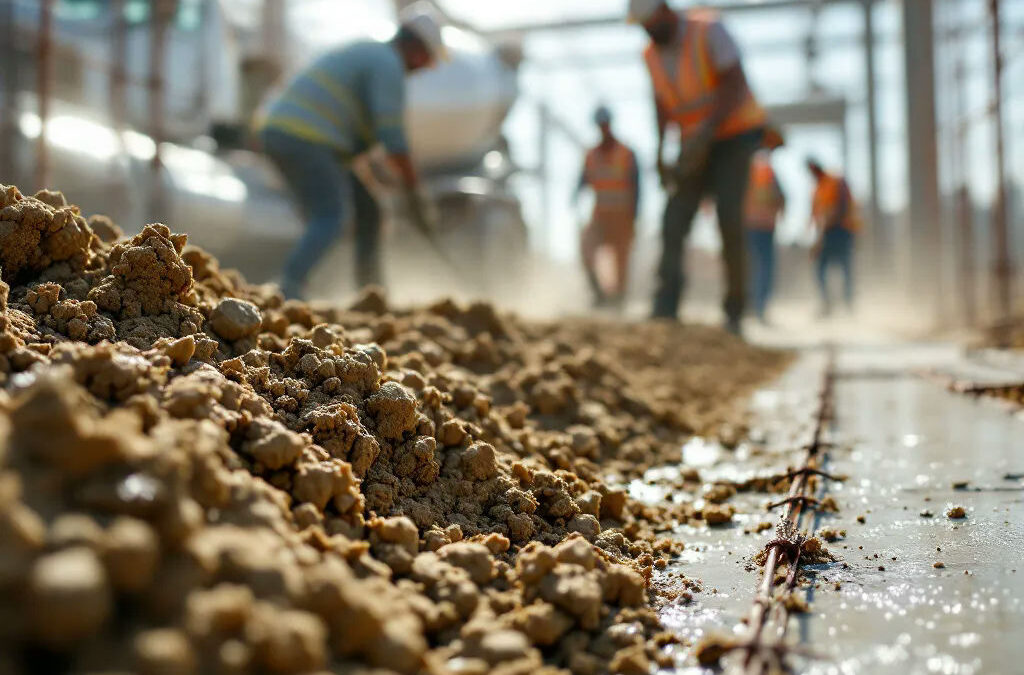I. Introduction
Selecting the right concrete mix is crucial for the success of any commercial project. The quality and characteristics of the concrete can significantly affect the durability, longevity, and overall performance of structures. Understanding the various factors that influence concrete mix choice is essential for ensuring that your project meets both functional and aesthetic requirements.
II. Types of Concrete Mixes
A. Standard Concrete Mixes
Standard concrete mixes are designed for general use and include:
- Type I (General use): This is the most commonly used concrete mix, suitable for structures like pavements and floors.
- Type II (Moderate sulfate resistance): Recommended for structures exposed to moderate sulfate concentrations, such as sewage systems and foundations in certain soil conditions.
- Type III (High early strength): This mix allows for rapid setting and strength development, ideal for cold weather conditions or when construction timelines are tight.
B. Specialty Concrete Mixes
Specialty concrete mixes are tailored for specific applications. Key types include:
- Fiber-reinforced concrete: This includes synthetic or natural fibers to enhance tensile strength and prevent cracking.
- High-performance concrete: Engineered for superior durability, strength, and workability, suitable for demanding environments.
- Self-consolidating concrete: Flows easily into forms without the need for vibration, reducing labor and ensuring even distribution.
- Reinforced concrete: Strengthened with steel reinforcement to improve load-bearing capabilities and overall structural integrity.
III. Key Factors to Consider
A. Project Requirements
When choosing a concrete mix, it’s essential to assess the specific requirements of your project. Look at factors such as load-bearing capacity, which dictates the structurability of your building. Additionally, environmental conditions like moisture exposure and temperature fluctuations can influence mix selection, as can aesthetic preferences related to color and finish.
B. Workability
Workability is a critical component in selecting the appropriate concrete mix. It refers to the ease with which the concrete can be mixed, poured, and finished. Consider the setting time, as some projects may necessitate quicker curing while others can allow for extended work periods. The mix should be easy to handle to minimize labor costs and construction time.
C. Durability
Durability determines how well the concrete will withstand environmental stressors. This includes resistance to weather changes, moisture infiltration, and chemical exposure, all critical in locations like industrial sites or coastal areas. The mix should also promote longevity, minimal maintenance, and low lifecycle costs, ensuring that the investment in the concrete is worthwhile.
IV. Calculating the Concrete Mix Ratio
Getting the concrete mix ratio right is fundamental to achieving the desired strength and workability. Common mix ratios, such as 1:2:3 (cement:sand:aggregates), provide a baseline that can be adjusted based on the project requirements. Factors like the anticipated load, the environment, and specific performance metrics should guide adjustments to achieve optimal results.
V. Additives and Admixtures
A. Types of Additives
Additives are substances added to the concrete mix to enhance its properties. Common types include:
- Plasticizers: Improve workability without adding excess water.
- Retarders: Slow the setting time, beneficial in hot weather or complex projects.
- Accelerators: Speed up the curing process, ideal for cold-weather applications.
B. Benefits of Using Admixtures
Utilizing admixtures can significantly enhance the performance of concrete. They improve workability, increase strength, and modify setting times according to project needs. When used appropriately, they can lead to cost savings and improved project timelines.
C. When to Use Different Additives
The choice of when to use specific additives depends on various factors such as environmental conditions and project timelines. For instance, using accelerators in cold weather prevents freezing, while retarders are advantageous during hot days to prevent premature setting. Carefully evaluating project requirements will facilitate effective admixture use.
VI. Sourcing Quality Materials
A. Choosing Reliable Suppliers
The quality of materials used in concrete mixes plays a pivotal role in the overall performance. Choosing reliable suppliers with a strong reputation can ensure that you receive high-quality aggregates, cement, and additives. Local suppliers may offer better consistency and availability, which can streamline the procurement process.
B. Importance of Material Quality
Using high-quality materials is essential for achieving the desired strength and durability of your concrete mix. Poor-quality materials can lead to issues such as cracking, scaling, and reduced lifespan of the structure. It is critical to verify the quality of materials through tests and certifications before making a purchase.
C. Recommended Brands for Concrete Mixes
Certain brands have established themselves as leaders in the concrete mix market, known for their consistent quality and performance. Researching customer reviews and professional recommendations can help guide your selection. Investing in reputable brands often translates to better results and fewer issues down the line.
VII. Testing the Concrete Mix
A. Importance of Testing Before Full-Scale Application
Before applying a concrete mix on a large scale, conducting tests is vital to validate its suitability for your specific project. Testing provides critical data on workability, setting time, and strength, allowing for adjustments if necessary. This step is essential to mitigate risks associated with structural failure or performance issues.
B. Common Testing Methods
Several testing methods can be employed to assess concrete mixes:
- Slump test: Measures the consistency of the concrete mix to ensure it meets project specifications for workability.
- Compressive strength test: Determines the maximum load the concrete can withstand, giving insights into its overall durability and performance.
VIII. Case Studies: Successful Commercial Projects
A. Examples of Projects with Optimal Concrete Mix Selection
Examining case studies of successful commercial projects can provide valuable insights into effective concrete mix selection. These projects often involve specific considerations, such as unique load requirements, environmental challenges, and aesthetic goals. By analyzing these situations, other contractors can draw parallels to their own projects.
B. Lessons Learned from Each Case
Each case study offers lessons learned that can improve future project outcomes. Proper mix selection often correlates with shortened timelines, reduced costs, and enhanced overall performance. Understanding these lessons can guide project managers in making informed decisions for their own concrete mix specifications.
IX. Conclusion
Choosing the right concrete mix is critical to the success of any commercial construction project. The correct mix not only ensures structural integrity but also aligns with project timelines and budgets.


